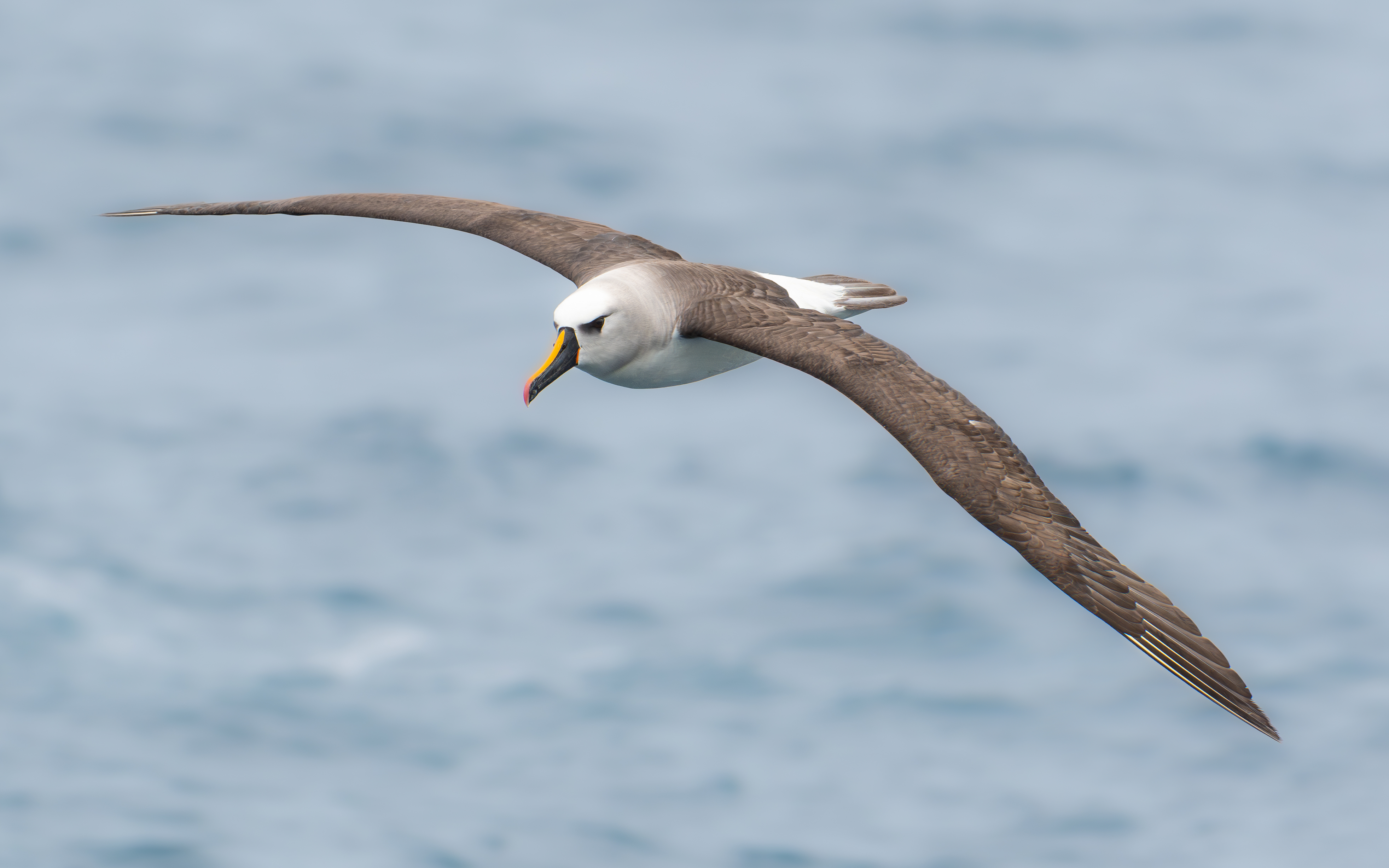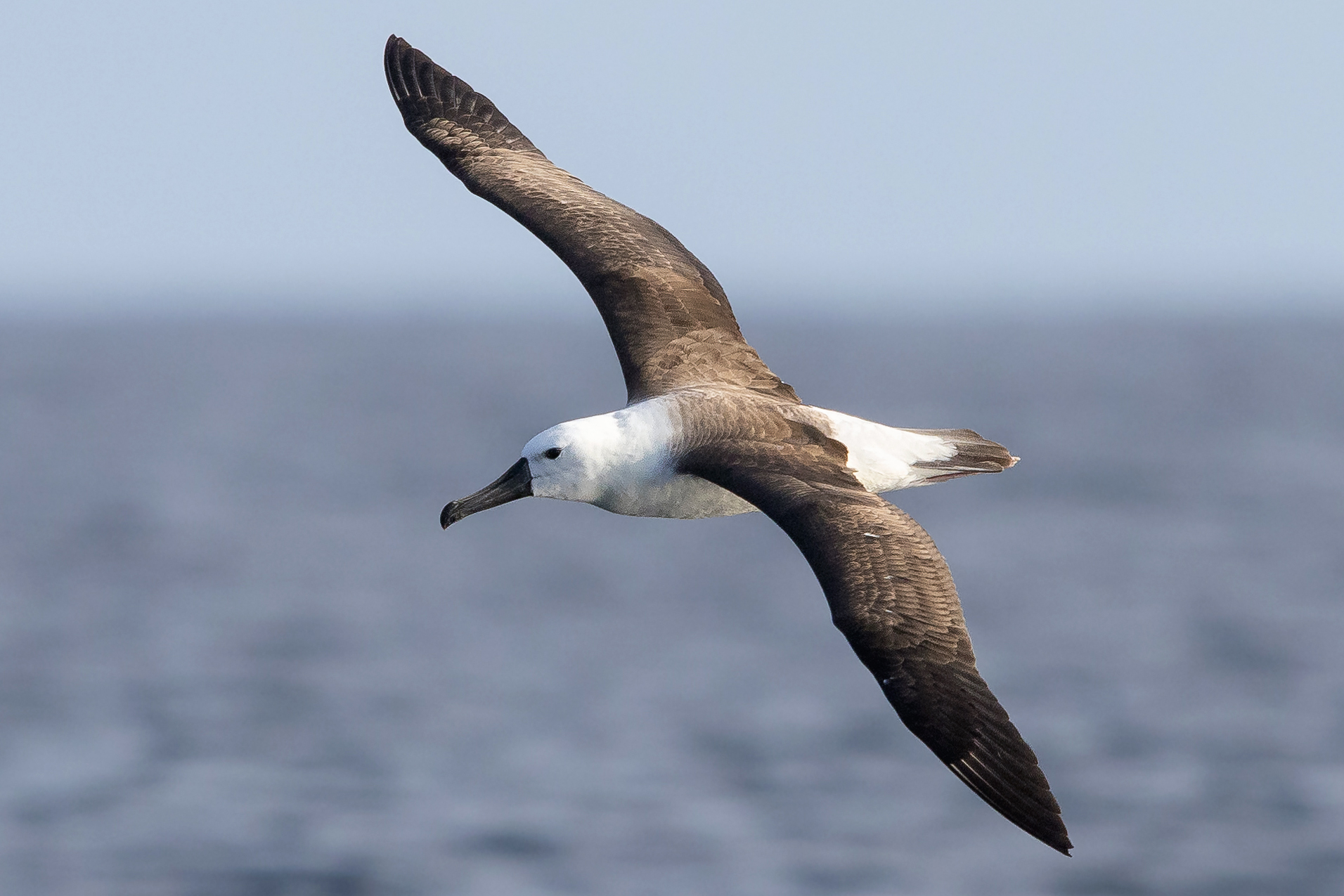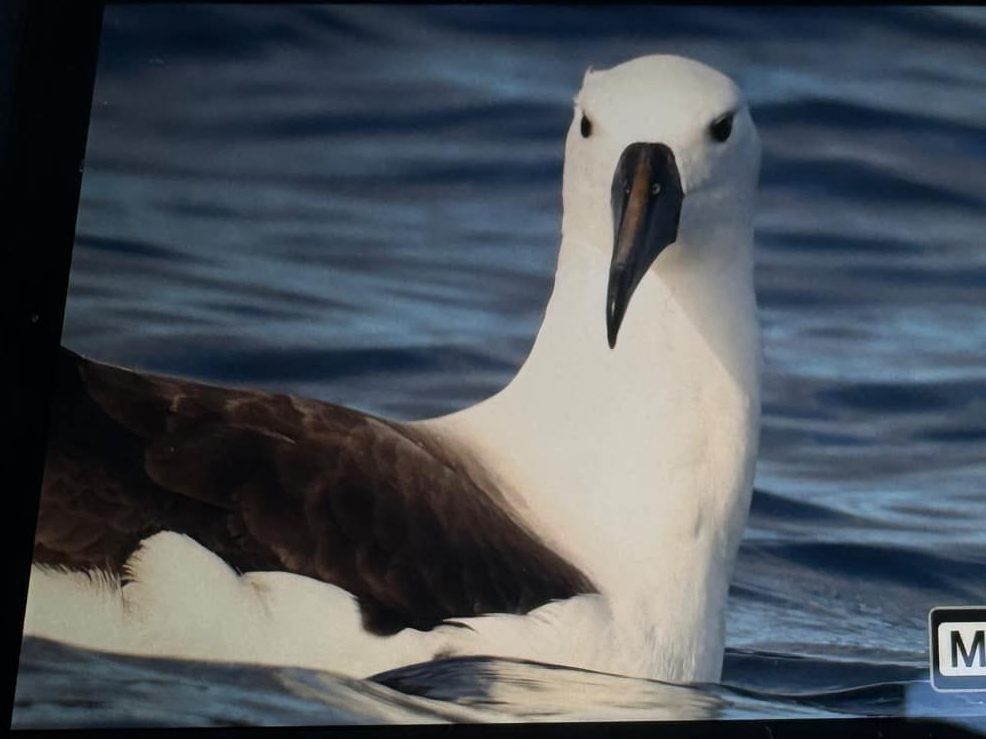
Antipodean Albatrosses at sea, artwork by James Allan
Inspired by his photographs taken at sea, Australian artist, James Allan, has produced a linocut of two flying Antipodean Albatrosses Diomedea antipodensis. The species, endemic to New Zealand, is categorized as globally Endangered, and Nationally Critical in New Zealand, and has been recognized as a Species of Special Concern by the Albatross and Petrel Agreement. ACAP ACAP Latest News reached out to James, who lives in Adelaide Hills, South Australia, to learn more about his artwork, and about him.
James describes himself as an amateur artist, writing” I was taught lino printing in Grade 6 at school. My teacher asked me to make prints in the art centre on the school open day. I have been largely self-taught since then, but have attended classes with the Ruth Tuck Art School in the last few months.”
He describes the process he follows: “I usually draw the design on a piece of linoleum with a pencil and carve it out with a v-shaped chisel. Larger white areas are removed with a u-shaped chisel. It helps to create textures to represent different tonal values. Ink is applied with a rubber roller and paper is placed onto the inked lino and pressure applied. At the printing school a large metal press is used. At home I can press the paper with a metal spoon. It is possible to cut several different lines to represent different colours I often colour the print by applying a water colour wash., a bit like colouring in a colouring-in book.”
James continues: “The design of the two Antipodean Albatrosses was cut into vinyl. This has slightly different properties to linoleum, being firmer and elastic. It is the largest print I have ever made at 30x40 cm. A colour version was designed using Photoshop, but will be painted by hand when I do my final run. The colours will vary from print to print. The print can also be produced in black and white, and I think it looks very handsome without colour.”

Dorsal view. Inspiration for the linocut, Antipodean Albatross at sea, 07 April 2024, photograph by Frances and James Allan
James, along with his wife Frances, joined a pelagic tour out of Port MacDonnell, South Australia run by David Harper. on 7 April 2024, the third they have attended. “We were excited to see Buller's Albatross Thalassarche bulleri for the first time. We met many excellent birders on the trip who were keen to teach us both about the pelagic birds we saw. During the trip we both took photographed Antipodean Albatrosses quite close to the boat, flying in, circling and feeding on the water. I was taken by the vermiculation of some of the adult birds and thought it would make a good design.”

Ventral view. Inspiration for the linocut, Antipodean Albatross at sea, 07 April 2024, photograph by Frances and James Allan
He continues “I chose the flying albatross design as it conveyed the enormity of the birds we saw with their outstretched wings. One albatross is seen from the dorsal aspect, the other ventral. The waves and clouds are important elements and were also adapted from photos we took. The final design is a collage of different photographs with a little bit of artistic licence. I feel that it is always better to design the print than to merely reproduce exact detail from a photograph. In lino designs you have a limited palate of line and texture, which means you need to learn to be more expressive with what you have. One of the things that drew me to this medium in the first place, is that lino prints often have a charm for simplicity, expressive marks and clever design.”
James ends by saying that he is still learning and regards himself as a beginner but plans a print run of his albatross linocut. ACAP’s Emeritus Information Officer wants one!
John Cooper, Emeritus Information Officer, Agreement on the Conservation of Albatrosses and Petrels, 18 October 2024
 The small city of Dunedin (pictured) on New Zealand's South Island will host the Eighth Meeting of the Parties to the Agreement on the Conservaiton of Albatrosses and Petrels in May 2025; photograph by Nathan Hughes Hamilton
The small city of Dunedin (pictured) on New Zealand's South Island will host the Eighth Meeting of the Parties to the Agreement on the Conservaiton of Albatrosses and Petrels in May 2025; photograph by Nathan Hughes Hamilton
 English
English  Français
Français  Español
Español 



 An Atlantic Yellow-nosed Albatross in waters off Tristan Da Cunha; photograph by Ross Wheeler
An Atlantic Yellow-nosed Albatross in waters off Tristan Da Cunha; photograph by Ross Wheeler The colour-banded Indian Yellow-nosed Albatross at ‘The Petrel Station’
The colour-banded Indian Yellow-nosed Albatross at ‘The Petrel Station’


